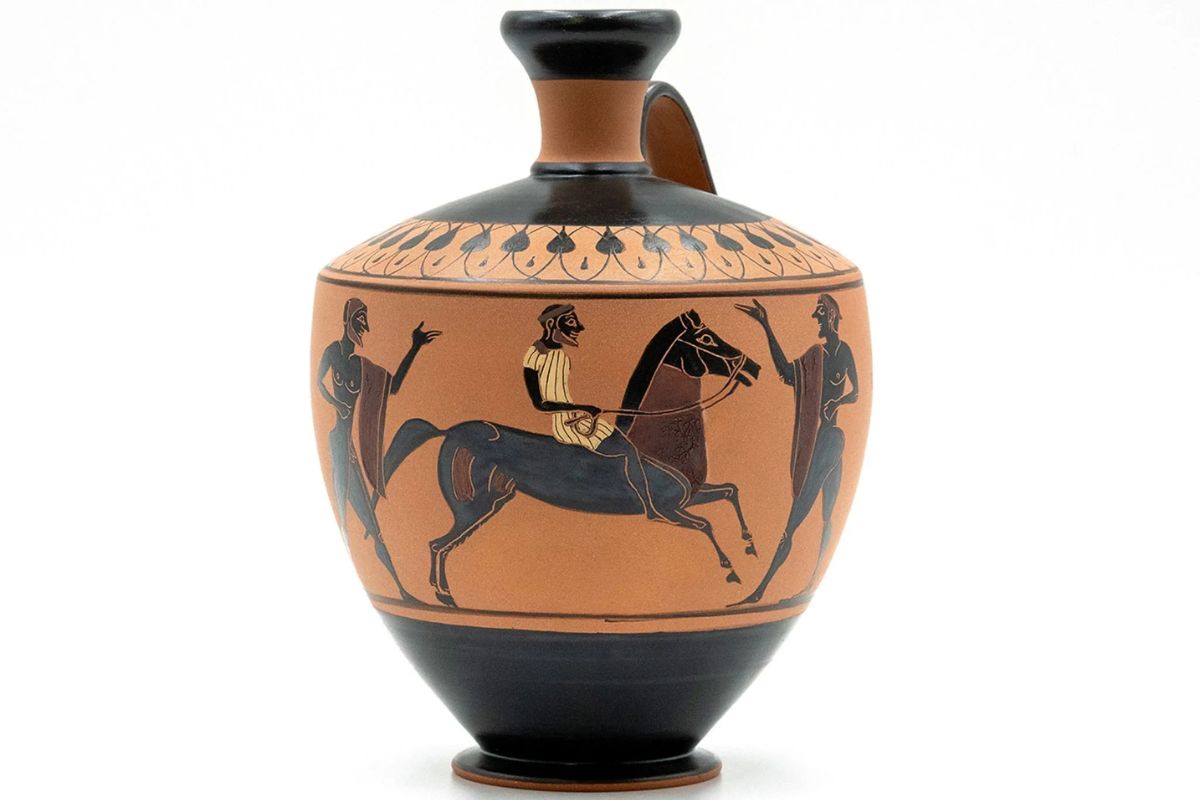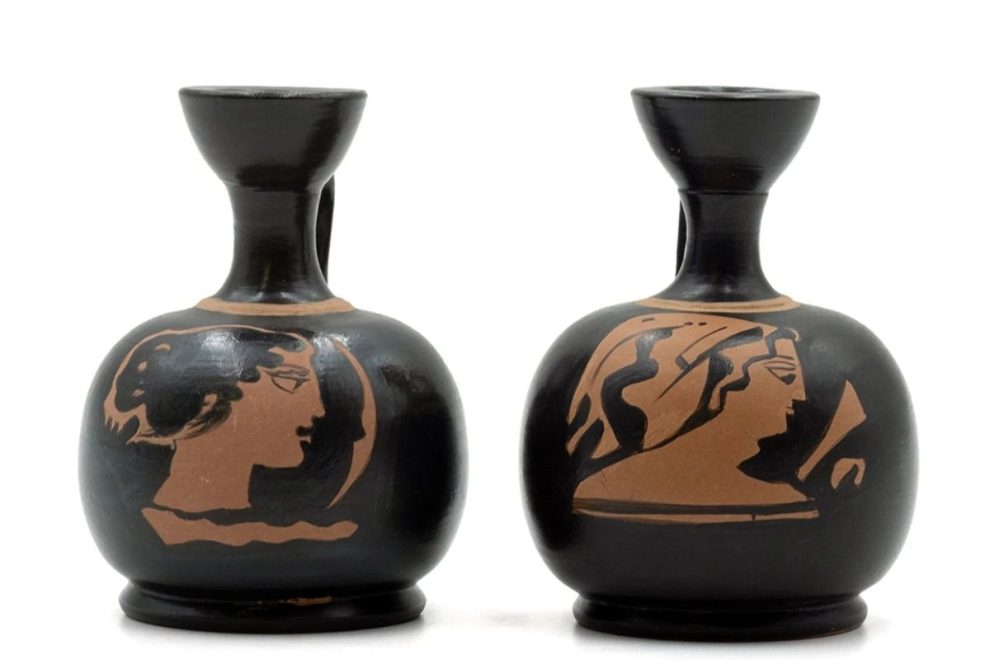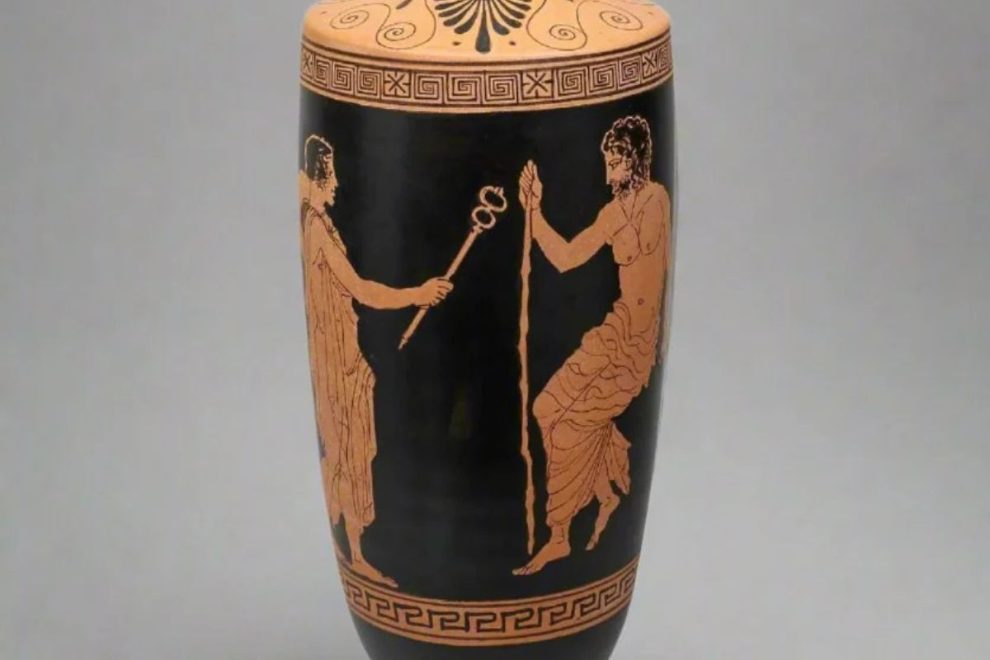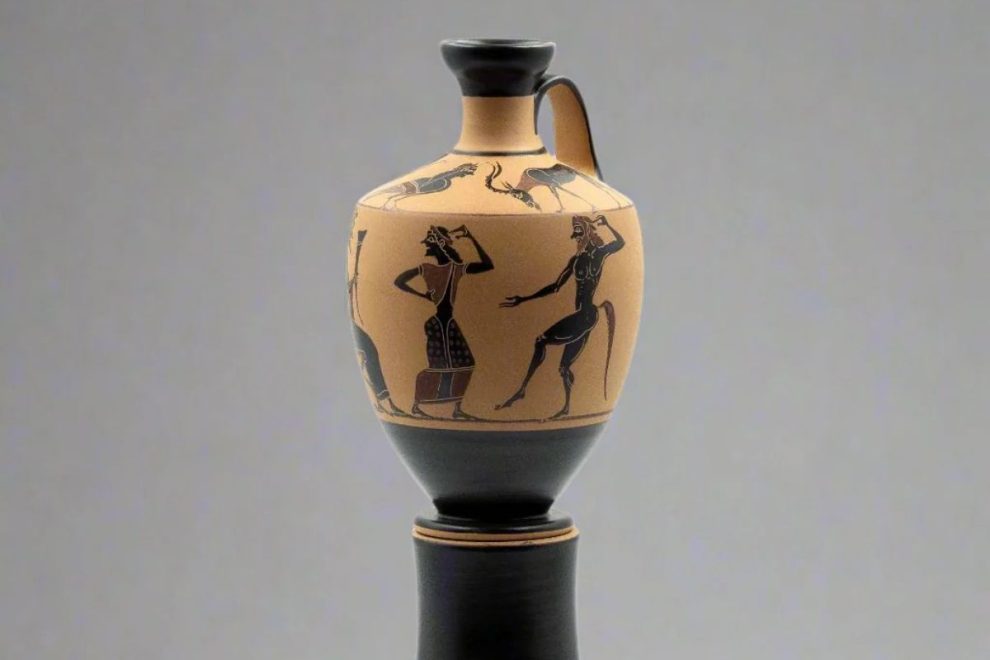
The lekythos Greek pottery is a striking example of how ancient Greeks combined beauty with practical and symbolic use.
Key Highlights
- The lekythos is an old Greek oil flask that started in Athens. People used it mostly at funerals. This type of lekythos Greek pottery reflects both artistic skill and cultural meaning.
• These flasks have a thin neck and body. This helps save the oil put in them.
• Decorated with vase painting, they often showed sad scenes of tombs, rituals, and goodbyes.
• The lekythos was made with terracotta. A lot of the time, the makers used the white ground method to decorate them.
• As well as having a distinctive shape, lekythoi often had rich colors. They also came in different sizes and shapes.
• Many have turned up in Athenian cemeteries. They still show us how skillful people were with art back then.
Pottery in ancient Greece was not just for daily use. The art showed what was important in their culture and beliefs. The lekythos is one item that stands out. This lekythos Greek pottery vessel has a narrow neck and pretty designs on it. People used it back then to hold oil that smelled good. It was important in funerals and graveside customs. With this type of pottery, you can see how Greece mixed beauty and use together. It lets us know how people in that ancient Greek civilization cared about good looks and purpose at the same time.

What is a Lekythos?
The lekythos is an oil jar that comes from ancient Greece. People would use it to keep olive oil. This kind of Greek vase is easy to know because it has a slim body, one handle near the neck, and a flat bottom. A long time ago, it had several uses. It did some everyday jobs and some special things, too. At funerals, people put lekythos in tombs as gifts. Because the lekythos was small, it did not need much oil, so there would not be much wasted. Sometimes, Greek makers made a fake neck for these oil jars. This made it look like the jar had more oil in it than it really did. This shows the clever way people in ancient Greece worked with pottery.
The lekythoi were not only used for daily life, but they also became a symbol in funerary art during the 5th century BC. At this time, decoration changed a lot. Artists started to paint detailed pictures on these vases. These images showed rituals, people visiting the tomb, and ways to say goodbye to loved ones. The white ground style was used on many lekythos vessels. The surface was covered with a light slip and then rich colors were painted on. Athenian craftsmen made the lekythos more than just a place to hold oil. They turned it into a work of art. Because of this, the lekythos showed both use and beauty in the 5th century in ancient Greece.
Function and Types of Lekythoi
The lekythos was used a lot in old Greek funerals. People did not use it to sell or trade things. Instead, they had it for funerary acts when someone died. This vase would hold scented oil. The oil could be put on the person or left at the grave as a gift. The pictures and artwork on the lekythoi showed things like losing someone, leaving, and feeling sad. These ideas were an important part of how people in ancient Greece felt about death.
You will find the lekythos in Athenian cemeteries in many shapes. There are many kinds of monuments that use these oil flasks. There are five main types of lekythoi. These are cylindrical, Deianeria, shoulder, squat, and acorn lekythoi. Some cylindrical lekythoi are tall and thin. Some are bigger and can take the place of a gravestone. The shoulder type looks rounder. The squat type is short and thick. The way these vases look and how big they are often match the style of vase painting that was famous at the time.
Some lekythoi looked like small statues. A few were shaped as animals or heads. How each was made, and the way it was used, help us see how important lekythoi were then. These vases let people get a feel for the skills people had, and for the customs in ancient Greek life. People use them to know more about rituals and art from that time.

Historical Significance of Lekythoi
Lekythoi are very important in helping us learn about the stories and ways of life in Ancient Greece. A lot of these oil flasks have been found in Athenian cemeteries. People used them as offerings to gods like Artemis and Hermes. This shows how they were used in religious events and rituals. The way each flask was made and decorated lets us see the skill and style of artists from the 5th century BC. These designs also show us what people in that time cared about and what they believed in. These lekythoi are more than just pottery. They are key pieces of Greek pottery history that help us understand their world better.
Origins and Development in Ancient Greece
Emerging in the 5th century BC, lekythoi showed a unique way of vase painting that made the bright colors and detailed designs stand out. These oil flasks were not used for business. People mostly placed them in Athenian cemeteries to honor those who had died. The vessel had a narrow body and neck. Many of these featured pictures of gods and goddesses like Artemis and Hermes. They show how art and culture grew in Greece during that time.
Role in Daily Life and Rituals
The lekythos was important in both daily life and rituals in ancient Greece. This oil flask had many uses. Most of the time, it held scented oil people used for themselves or offered at graves for those who had died. It had a narrow neck and body, so it was easy to pour. The flat base kept it steady. During rituals for gods like Artemis and Hermes, lekythoi became famous for their looks and the oil inside. They helped people feel closer to the gods.

Materials Used in the Creation of Lekythos Pottery
Ancient artisans used terracotta to make lekythoi because it was easy for them to get and was also strong. To help the ancient Greek vases look better, they put a white layer over the vase using a light slip or thin clay. This made the surface look pale and smooth. It was a good way for painting bright and rich colors. Adding painted designs to the vases showed the skill of the vase painting styles. The colors might fade as the years go by. But, the materials and ways used to make these Greek lekythoi help them be noticed as famous pieces of ancient Greek art.
How Were Lekythoi Typically Decorated?
Decorative styles found on lekythoi show how skilled the ancient Greek people were at painting vases. Craftsmen used a white method to draw each design. Then, they put rich colors on to show the small details. The images on these vases often showed funerals, with things like tombs, people saying goodbye, and graveside visits. These pictures match the way these vases were made to remember people who had died.
Here is a small table that shows how different styles of lekythoi decorations can be. This table compares a few of the design styles often used on lekythoi:
| Technique | Motifs |
| White Ground Slip | Tombs, farewell scenes, daily rituals |
| Geometric Patterns | Meander designs, bands, vines |
| Figurative Imagery | Human figures, chiton-clad women |
The art on these vases shows the feelings and ways of life from that time. Each vase was a special way to honor loved ones. This shows how important funeral customs were in the lives of people in ancient Greece.
Authenticity Identification in Lekythoi
Today, knowing where old lekythoi are from is very important. It helps people see where these things started and makes sure they stay safe. Locations like the Art Institute use science and many years of learning to figure out who made these items first. Careful checks of what they are made of, how they were made, and what is written on them help show if the item is real.
Museums and researchers use open access websites to give people a way to see clear pictures and read information. This helps more people look at these records. The tools be helpful to keep the artwork real. They also let others learn about the steps that save our shared history.
Also, real lekythoi that we know about almost always have the same style as those made in Athens. Their white ground look, their shapes, and their size help people tell the real ones from the copies or fakes. All this careful study keeps their stories safe. This way, people in the future can know what was before.
Final Reflections
The lekythos is an important work of ancient Greek artwork. It brings together a useful purpose with beauty and strong symbols. These lekythos Greek pottery oil flasks help us learn about funeral traditions in Greece. They show how people remembered and mourned those they lost. The use of lekythoi went into Roman art too, making other people find new ways to use their own artwork. When we look at a lekythos, we see how things from the past can still mean a lot. These objects were shaped by the people who made them. They still tell us how that civilization used everyday things to share stories.
